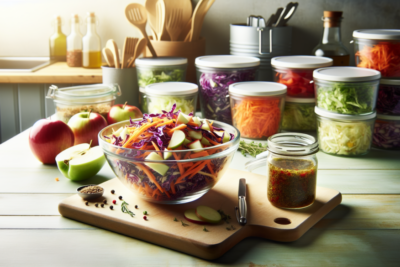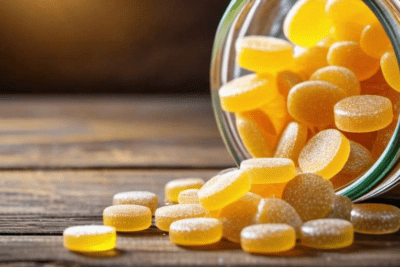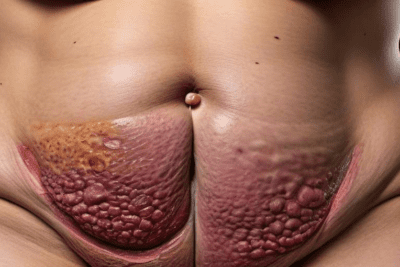
Lowering Blood Pressure Naturally: Effective Methods for Managing Hypertension

Lowering Blood Pressure Naturally: Effective Methods for Managing Hypertension
High blood pressure affects many people worldwide and is associated with increased risks of heart diseases and other serious health issues. Fortunately, there are natural ways to lower blood pressure without medication. Maintaining a healthy weight, following a balanced diet like the DASH diet, engaging in regular physical activity, managing stress levels, and reducing sodium and alcohol intake are effective lifestyle changes that can help manage blood pressure. Monitoring blood pressure at home and seeking professional guidance further support blood pressure control. Learn How to Cure Diabetes naturally for improved health outcomes.
Understanding Blood Pressure
Blood pressure is a crucial measure of the force exerted by blood against the walls of the arteries as the heart pumps it throughout the body. It is expressed in two numbers: systolic pressure over diastolic pressure. Understanding these readings is essential for monitoring and managing blood pressure effectively.
What is Blood Pressure?
Blood pressure refers to the pressure exerted on the arterial walls during two cardiac cycles: when the heart contracts (systolic pressure) and when it relaxes (diastolic pressure). The units of measurement for blood pressure are millimeters of mercury (mm Hg).
Blood Pressure Chart: Interpreting Readings
A blood pressure chart provides valuable insights into the significance of the recorded readings. It helps in determining whether the blood pressure falls within normal, prehypertensive, or hypertensive ranges. The chart allows individuals to understand the level of risk associated with their blood pressure measurements.
The Role of Systolic Blood Pressure vs. Diastolic Blood Pressure
Systolic blood pressure represents the force exerted on the arterial walls when the heart contracts. It is the higher number in a blood pressure reading. Diastolic blood pressure, on the other hand, signifies the pressure in the arteries when the heart is at rest between beats. The diastolic pressure is the lower number in a blood pressure reading. Both numbers play a crucial role in assessing cardiovascular health.
Normal Blood Pressure Range for Women
In general, a normal blood pressure range for women is considered to be around 120/80 mm Hg. However, it is important to note that blood pressure can vary based on several factors, including age, overall health, and individual circumstances. Regular monitoring and consultation with a healthcare professional are essential for maintaining optimal blood pressure levels in women.
Visit our services page now!
Lowering Blood Pressure Naturally through Lifestyle Changes
When it comes to managing high blood pressure, making lifestyle changes plays a crucial role. By adopting a healthy diet, engaging in regular physical activity, and reducing stress levels, you can effectively lower your blood pressure naturally.
The Importance of a Healthy Diet
A well-balanced diet is key to maintaining healthy blood pressure levels. Following the Dietary Approaches to Stop Hypertension (DASH) diet is highly recommended. This diet emphasizes consuming whole grains, fruits, vegetables, and low-fat dairy products. These foods are rich in nutrients and have been proven to assist in blood pressure control.
Following the DASH Diet for Blood Pressure Control
The DASH diet focuses on reducing sodium intake and increasing potassium-rich foods. By limiting the amount of sodium consumed, you can effectively manage your blood pressure. Incorporating foods such as bananas, leafy greens, and potatoes into your diet will help increase your potassium levels, which have a positive impact on blood pressure.
Incorporating Heart-Healthy Foods into Your Daily Meals
In addition to following the DASH diet, incorporating heart-healthy foods can further assist in blood pressure control. Foods such as salmon, avocados, nuts, seeds, and olive oil are known for their beneficial effects on cardiovascular health. Including these foods in your daily meals provides essential nutrients that support blood pressure management.
Regular Physical Activity for Blood Pressure Management
Engaging in regular physical activity is another effective way to naturally lower blood pressure. Aim for at least 30 minutes of moderate exercise every day, such as brisk walking or cycling. Physical activity helps strengthen the cardiovascular system, improves blood flow, and reduces the risk of developing hypertension.
Recommended Exercise Regimens for Lowering Blood Pressure
To specifically target blood pressure reduction, incorporate aerobic exercises and strength training into your weekly routine. Cardiovascular activities like jogging, swimming, or dancing increase heart rate and help lower blood pressure. Additionally, strength training exercises, such as lifting weights or using resistance bands, help improve overall cardiovascular health.
Benefits of Physical Activity on Hypertension
Regular physical activity has multiple benefits when it comes to managing blood pressure. Exercise helps maintain a healthy weight, improves blood circulation, reduces stress levels, and enhances overall cardiovascular health. These combined effects contribute to lowering blood pressure naturally.
Reducing Stress Levels for Improved Blood Pressure Control
Chronic stress can have a significant impact on blood pressure levels. Finding ways to manage and reduce stress is crucial for maintaining healthy blood pressure.
Stress and Its Impact on Hypertension
When you experience stress, your body releases hormones that can temporarily increase blood pressure. Prolonged periods of high stress can contribute to the development of hypertension. Adopting stress management techniques can help counteract these effects and promote blood pressure control.
Techniques to Manage and Reduce Stress
- Practicing mindfulness meditation
- Engaging in deep breathing exercises
- Participating in yoga or tai chi
- Engaging in regular physical activity
- Getting enough sleep and practicing good sleep hygiene
- Engaging in hobbies or activities you enjoy
By incorporating these stress-reducing techniques into your daily routine, you can effectively manage stress levels and reduce the impact on your blood pressure.
Key Factors Influencing Blood Pressure
Understanding the various factors that influence blood pressure is essential for effective management and control. Several key factors play a significant role in the development and progression of high blood pressure. These factors include the connection between high blood pressure and kidney health, the role of sodium intake in blood pressure control, the impact of alcohol consumption on hypertension, and the effect of weight management and waist circumference on blood pressure.
The Connection Between High Blood Pressure and Kidney Health
Healthy kidneys play a crucial role in regulating blood pressure. When kidneys are not functioning optimally, they can contribute to the development of high blood pressure. This connection highlights the importance of maintaining kidney health to prevent and manage hypertension effectively.
The Role of Sodium Intake in Blood Pressure Control
Dietary sodium intake plays a significant role in blood pressure regulation. Consuming excessive sodium can lead to fluid retention and increased blood pressure. It is crucial to be mindful of sodium intake and limit the consumption of processed and high-sodium foods to maintain healthy blood pressure levels.
The Impact of Alcohol Consumption on Hypertension
Excessive alcohol consumption can have a detrimental effect on blood pressure. Alcohol raises blood pressure and can lead to long-term hypertension. It is recommended to moderate alcohol intake and limit it to one drink per day for women and two drinks per day for men to maintain optimal blood pressure levels.
The Effect of Weight Management and Waist Circumference on Blood Pressure
Weight management and waist circumference are closely linked to blood pressure control. Being overweight or obese increases the risk of developing high blood pressure. Losing weight through lifestyle modifications, such as a balanced diet and regular exercise, can significantly reduce the risk of hypertension. Additionally, excessive weight around the waist is particularly concerning as it increases the likelihood of high blood pressure.
- Understand the connection between kidney health and blood pressure
- Monitor and reduce sodium intake to control blood pressure
- Limit alcohol consumption to maintain optimal blood pressure levels
- Focus on weight management and reducing waist circumference to prevent hypertension
By addressing and managing these key factors, individuals can take significant steps towards naturally lowering their blood pressure and reducing the risk of associated health complications.
Additional Tools and Support for Blood Pressure Management
Monitoring and Recording Blood Pressure at Home
Keeping track of your blood pressure at home is a valuable tool for managing hypertension. By regularly monitoring your blood pressure, you can identify any fluctuations or changes that may require attention. To monitor your blood pressure at home:
- Invest in a reliable, easy-to-use blood pressure monitor.
- Follow the manufacturer's instructions for accurate readings.
- Measure your blood pressure at the same time each day, preferably before taking any medications.
- Record your readings in a log or use a mobile app specifically designed for blood pressure tracking.
- Share your recorded readings with your healthcare provider during regular check-ups for better monitoring and decision-making.
Utilizing Technology and Apps for Blood Pressure Tracking
Advancements in technology have provided us with convenient tools and applications to assist in tracking blood pressure. These innovative solutions can simplify the process and enhance your hypertension management. Consider using:
- Mobile apps dedicated to blood pressure monitoring and tracking, which can store your readings and provide personalized insights.
- Smart devices, such as wearable fitness trackers or smartwatches, with built-in blood pressure monitoring capabilities.
However, it's important to remember that these technological tools are supplementary aids and should not replace professional medical advice or regular check-ups with your healthcare provider.
Seeking Professional Guidance for Blood Pressure Control
When it comes to effectively managing your blood pressure, seeking professional guidance is crucial. Your healthcare provider plays a vital role in providing personalized recommendations and monitoring your progress. Here are some key aspects to consider:
- Regularly schedule appointments with your healthcare provider to discuss your blood pressure management.
- Share your blood pressure readings and any observations or concerns you may have.
- Discuss lifestyle modifications, medication options, and potential side effects.
- Frequently check in with your provider to evaluate the effectiveness of your blood pressure management plan and make any necessary adjustments.
Remember, your healthcare provider is your partner in maintaining healthy blood pressure levels, so make sure to communicate openly and follow their guidance.
- Managing Hypertension: Take Control of Your Blood Pressure with Our Tips and Strategies
- The Link Between Blood Pressure and Heart Health: Discover How to Cure Diabetes
- Certified Diabetes Educator Exam Practice Questions
- Canada is Leading the Fight Against Diabetes
- Understanding Blood Sugar Levels: A Comprehensive Guide









